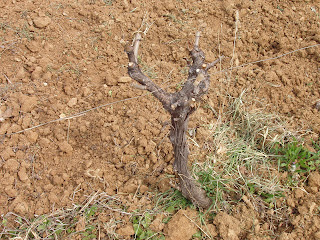After phylloxera (1955-1960), harvesters in Greece, when they planted new plants they were using phylloxera-resistant American wild plants. A practice followed by many until today. We create new plants by our-selves, risking a catastrophe of our vineyards. We choose rods of very good grapes and put them on the sand upside down to make roots. In May we will meet again when they are ready for planting. This is the process that was followed before the phylloxera in areas that were relatively dry. In areas that had potentials for watering, the wine growers planted the rods into the soil immediately without having roots.
 |
| We tie the vines in bundles. |
 |
| We burry them upside down in the soil. |
 |
| We water the dirt so to compress it. |
 |
| We cover them with sand so they can make roots. |
 |
| We cover them with manure to keep them warm. |
 |
| We put nylon above them to keep them warm. |




